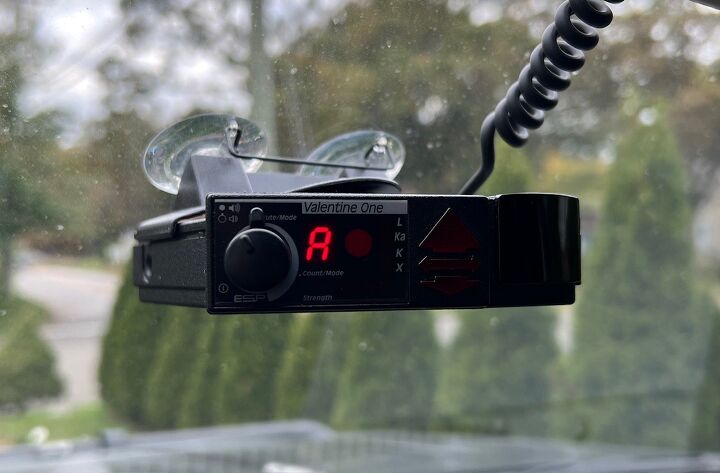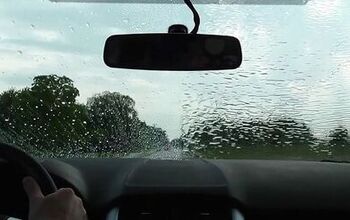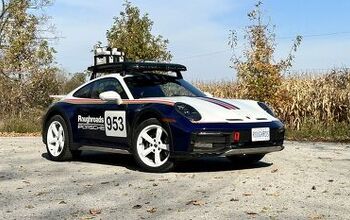Do Radar Detectors Really Work?

You’re hurtling down your favorite highway, foot planted on the accelerator, engine playing its sweet song of mechanical harmony when an auto enthusiast’s most feared sights: Blue and red flashing lights. Speeding might be the means to an enjoyable end, or at least cutting down the time spent commuting, and avoiding traffic stops is a trick of the trade for knowledgeable drivers. Doing so can mean employing the tried-and-true tech known as a radar detector, which has been leaned on for decades to help prevent expensive tickets. Yet skeptics remain, questioning the efficacy and relevance of these electronic chaperones.
The premise of a radar detector is simple yet enticing: An electronic device designed to alert a driver to the presence of radar waves emitted by law enforcement radar guns, allowing them to adjust their speed and avoid a costly ticket. It’s a notion that appeals to the inner rebel in every driver, promising a chance to outwit the watchful eyes of authority.
However, the complex dance between technology and law enforcement tactics is a tricky one. There’s an ongoing arms race between radar detector manufacturers and law enforcement agencies that has led to a constant evolution of both radar guns and detectors alike.
Radar guns have become more sophisticated, utilizing various frequencies and modulation techniques, making it challenging for radar detectors to keep up. The very essence of the effectiveness of the civilian’s authority-detecting system hinges on their ability to detect and identify the radar waves emitted by radar guns. The first generation of radar detectors could merely detect the presence of radar waves, sending drivers into a paranoid frenzy over constant false alarms. Over time, newer models emerged, featuring advanced signal processing and filtering algorithms that aim to distinguish the difference between legitimate radar signals and false alarms from other sources like motion-sending sliding doors.
Yet, the cunning adversaries at the law enforcement wouldn’t let this fly. They introduced new technologies like "instant-on" radar. This trickery involves radar guns remaining inactive until the very moment they are used, leaving radar detectors blindsided until it's too late. Furthermore, the advent of laser-based speed detection devices has proved to be a formidable foe for radar detectors, as laser beams travel in a straight line and are harder to detect from a distance. There’s also the aspect of new frequencies which are harder for outdated detectors to pick up.
As the battle between radar detectors and law enforcement rages on, it's essential to recognize that radar detectors can still provide a valuable advantage to savvy drivers. In situations where law enforcement uses constant radar or is within the range of the detector, it can indeed provide a timely warning, giving the driver an opportunity to adjust their speed and avoid a ticket.
Moreover, the increasing use of traffic enforcement cameras and other technology-based methods means that radar detectors might not be the cure-all for avoiding tickets. Advanced traffic monitoring systems, automated speed cameras, and even aerial surveillance can catch speeding drivers unaware, rendering a radar detector futile.
In the end, the efficacy of a radar detector boils down to a delicate interplay of technology, law enforcement tactics, and a driver's skill and awareness. While it can provide a valuable edge in certain situations, it's no magical shield against all forms of speed enforcement.
Similarly, local laws and regulations may impact the legality of using a radar detector. In Virgina, for example, radar detectors are illegal. Using one comes wholly at the driver’s own risk, and getting caught with one is a recipe for receiving a hefty ticket, or worse.
The best recipe for success against being caught speeding is a multi-faceted approach. Pairing a quality radar detector like the Valentine One V1 Gen 2 (the new version of the legendary original Valentine One that we’ve been testing and that is pictured installed in our vehicle above) with applications like Waze which allow users to mark where speed traps lie or where law enforcement is hiding can work wonders for your ability to dodge the consequences of driving above the speed limit. Likewise, it’s vital to mount the radar detector up high by the rearview mirror so as to best allow it the chance to pick up the authority’s radar when pointed at it.
While radar detectors do work when used properly, they should not be relied on as a sole piece of equipment to prevent speeding tickets. Rather, one’s eyes are the number one tool for getting caught. Together, the two can help preserve a clean driving record and protect financial stability. By using a radar detector responsibly, drivers can strike a balance between the thrill of the drive and the obligation to adhere to traffic laws, ensuring a safer and more enjoyable driving experience for all.
Become an AutoGuide insider. Get the latest from the automotive world first by subscribing to our newsletter here.

Ross hosts The Off the Road Again Podcast. He has been in the off-road world since he was a kid riding in the back of his dad’s YJ Wrangler. He works in marketing by day and in his free time contributes to Hooniverse, AutoGuide, and ATV.com, and in the past has contributed to UTV Driver, ATV Rider, and Everyday Driver. Ross drives a 2018 Lexus GX460 that is an ongoing build project featured on multiple websites and the podcast.
More by Ross Ballot




































Comments
Join the conversation
I have an Escort Radar Detector. It tells me when the laser is hitting my car. The best solution is a laser jammer. I had a Blinder system in my Ford Escape, it rusted out after 10 years, and I drive slower these days. But it worked incredibly well. Unbelievably well. If you're going to do the speed, use WAZE and Blinder.